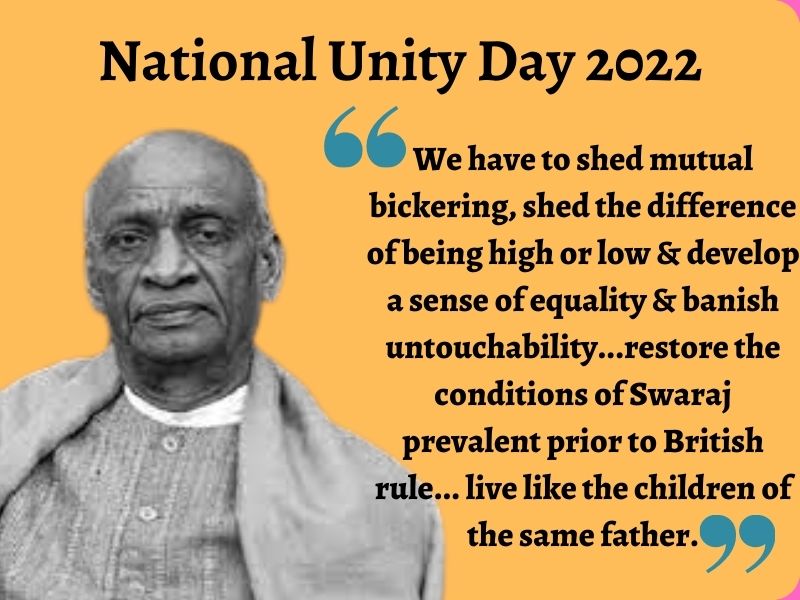-Shreyosi Chakraborty
Every year, October 31 is celebrated as the National Unity Day or Rashtriya Ekta Diwas in India to honour Vallabhbhai Jhaverbhai Patel. Popularly referred to as the Iron Man of India, Sardar Vallabhbhai Patel had been instrumental in the formation of the states and bringing them all under Indian rule post-British leadership left the country.
This year, the country is celebrating Patel’s 147th birth anniversary.
The government of India declared this day to be commemorated as National Unity Day in 2014 when the Ministry of Home Affairs announced that the occasion guaranteed the country’s strength of surpassing all threats to its unity, integrity and security.
Union Home Minister Amit Shah today said that Sardar Vallabhbhai Patel realised the dream of a strong and united India with his farsightedness, despite attempts by some forces to keep the country divided.
Shah also said that in the next 25 years, India will be able to realise the dream of the country’s freedom fighters of making India a strong and prosperous country and celebrate its 100th year of independence.
“Even during that time, there were efforts by some forces to keep India divided. We have seen how Sardar Patel brought Junagarh, Jammu and Kashmir, and Hyderabad under the fold of the Union of India through his farsightedness and political acumen,” he said.
The ‘Run for Unity’, which began from the Major Dhyan Chand National Stadium here, saw the participation of a large number of people, including sports personalities, sports enthusiasts and personnel of central police forces.
National Unity Day was inaugurated in 2015 by Prime Minister Narendra Modi by flagging off “Run for Unity” in New Delhi. Apart from this the Central government also built Sardar Vallabhbhai Patel’s statue, which is the world’s tallest statue- the Statue of Unity in Gujarat ‘s Kevadia, overlooking the river Narmada.
Born on 31 October 1875 in the city of Nadiad, Gujarat to a petty landowning family of the Leva Patidar caste, Vallabhbhai Jhaverbhai Patel grew up under his mother’s care in the town of Karamsad and often helped his father Jhaverbhai in tilling the land.
At 16, Patel moved to Petlad, a small town just over 10 km from his village, to learn English. He got married to Javerbai during the same time and they further went on to have two children — Mani, a girl and Dahya. Javerbai passed away in 1908, when Patel was 33. He remained a widower for the rest of his life. Later he passed the district pleader’s examination, which enabled him to practice law.
After independence, Patel became the Home Minister and deputy of the first Prime Minister Pandit Jawaharlal Nehru. He played a significant role to integrate 562 princely states under the Indian Dominion. There were several resistances from Junagarh, Hyderabad and Jammu and Kashmir but Patel overcame all and managed to bring them all under Indian dominion.
He also created the All-India bureaucratic service to develop a systematic framework to achieve the development goals of India.
Also Read: Sardar Vallabhbhai Patel Jayanti 2019: Lesser known facts
